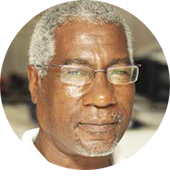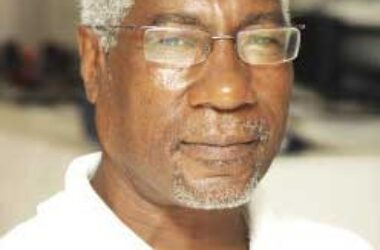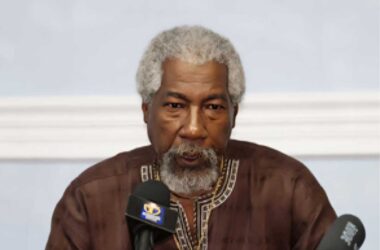
OCTOBER 1 marked the 74th Anniversary of the People’s Republic of China (PRC), an over-seven-decades-long period that’s stretched from its establishment by the Communist Party of China (CPC) under the leadership of Chairman Mao Tse-Tung in 1949, to its current status as a stable and growing world economic and political power – and champion of the Global South.
The PRC has advanced from decades of poverty to constantly-accelerated modernization in the past four-plus decades, advancing industrialization, eliminating poverty, meeting United Nations (UN) Sustainable Development Goals (SDGs), ever-caring for an increasingly-wealthier population – and earning ever-growing respect on the world stage.
That long march of seven-plus decades saw Hong Kong move from a reputation as the world’s biggest clock-maker to its rightful part of the People’s Republic, China became and remained the world’s factory; Chinese innovations took the tech-world by storm; Chinese products entered every corner of Planet Earth; the world’s second-most-populous nation kept population-growth in check while contributing to world science, technology and medicine – and Beijing engaged on equal-footing with all competitors on the global capitalist market, while confidently building Socialism with Chinese Characteristics.
In the decades since Deng Xiaoping introduced the changes in the 1980s that led to China’s quick global expansion, China has gained global recognition and respect, working with fellow developing nations to take its rightful place on the world stage.
China’s trade and political ties with the rest of the world grew from the early integration of the giant domestic economy to the global market, while providing ever-available labour for quicker delivery of better goods to the global commodities market.
China-US trade is today essential to global economic balance, even while Washington’s China policies continue to be dictated by domestic political and electoral agendas.
Over the past two decades, Chinese have also become the world’s most-wanted tourists, Western capitals also going heads-over-heels to attract Chinese businesses and students.
The PRC competes at equal levels with all in the so-called Space Race, with emphasis on harnessing science for Peace and Progress for Humankind.
From October 1, 1949, the PRC, through national multi-year plans that continue with every new leader and administration in Beijing, the Communist Party of China (CPC) has also grown in incomparable strength and influence, now with over 100 million members and hundreds of millions of supporters nationwide.
In the first quarter of the 21st Century, the CPC observed its first centenary, while the PRC is steaming ahead to its first 100 years in 2049, just a quarter-century away.
The CPC has won every scheduled presidential and parliamentary election and all signs are it will continue to, as a result of its decades of constant delivery of promises for continuing upliftment and improvement of the lives of Chinese – and keeping the economy ever-growing, come-what-may.
China’s military continues to grow in strength and capacity and is demonstrating, on every occasion tested, its ability to surely defend the PRC – and defensibly attack, if attacked first…
The People’s Liberation Army (PRA) also continues to defy the air and naval military-political incursions in the South China Sea, the Taiwan Strait, the Sea of Japan and the Korean Peninsula.
Between Deng and Xi, China’s ties with the rest of the world have only grown with time, now recognized by 181 member-states of the United Nations (UN), with permanent membership of the UN Security Council and helping provide mature global leadership for peace and against war.
The PRC’s ties with Latin America and the Caribbean have grown considerably over the past 60 years and intensified in more-recent decades through fruitful bilateral and multilateral agreements and active cooperation with the Community of Latin American and Caribbean States (CELAC) and the Caribbean Community (CARICOM).
China is approaching its 75th anniversary with purpose, preparing to unveil more attractive accomplishments along the new Silk Road of today’s ever-advancing Belt and Road Initiative (BRI), which has attracted much attention and participation by mainly developing nations globally, from Asia to Africa, Europe to The Americas – and now the Caribbean…
As its 75th anniversary approaches, the PRC continues to fare well – and better than some of its fiercest critics would have hoped, most now stumbling-over each-other to create new phrases for old halfway measures between mechanisms of engagement and disengagement with Beijing.
But all the above has been only possible because of the intrinsic relationship between the CPC and the People of China, who freely and fairly vote for its candidates in universally-recognized national elections, never mind the never-ending cloak-and-dagger efforts by the Western media to treat every national assembly of elected parliamentarians and CPC Congress as being choreographed for colorful global display.
Since the start of the new millennium and the turn of the century, the PRC and CPC have demonstrated a remarkable ability to adjust and adapt, engage and disengage, give-and-take, but always maintaining principles of non-intervention in other nations’ affairs, while increasingly overcoming traditional political barriers through social and economic engagements, based on mutual and equal respect with all partners.
The Taiwan issue remains one where even the main external agitators cannot and do not dispute there’s only One China and latest developments have again shown that as far as Beijing (the PRC, the CPC and the PRA) are concerned, any type of detachment or extraction of the island from the mainland, politically or otherwise, is simply out of the question.
China’s support in CARICOM has grown from four in the early-1980s to nine out of 14 in 2023; and in the last decade, Beijing has been increasing its mutually-beneficial bilateral and multilateral engagements with Antigua & Barbuda, Barbados, The Bahamas, Dominica, Grenada, Guyana, Jamaica, Surinam and Trinidad & Tobago.
Meanwhile, under President Xi, the PRC’s role in the political and economic leadership of the BRICS alliance, its peace efforts in Ukraine and engagements with the African Union (AU) and its member-nations, continue to attract and gain admiration of Caribbean leaders across-the-board.











